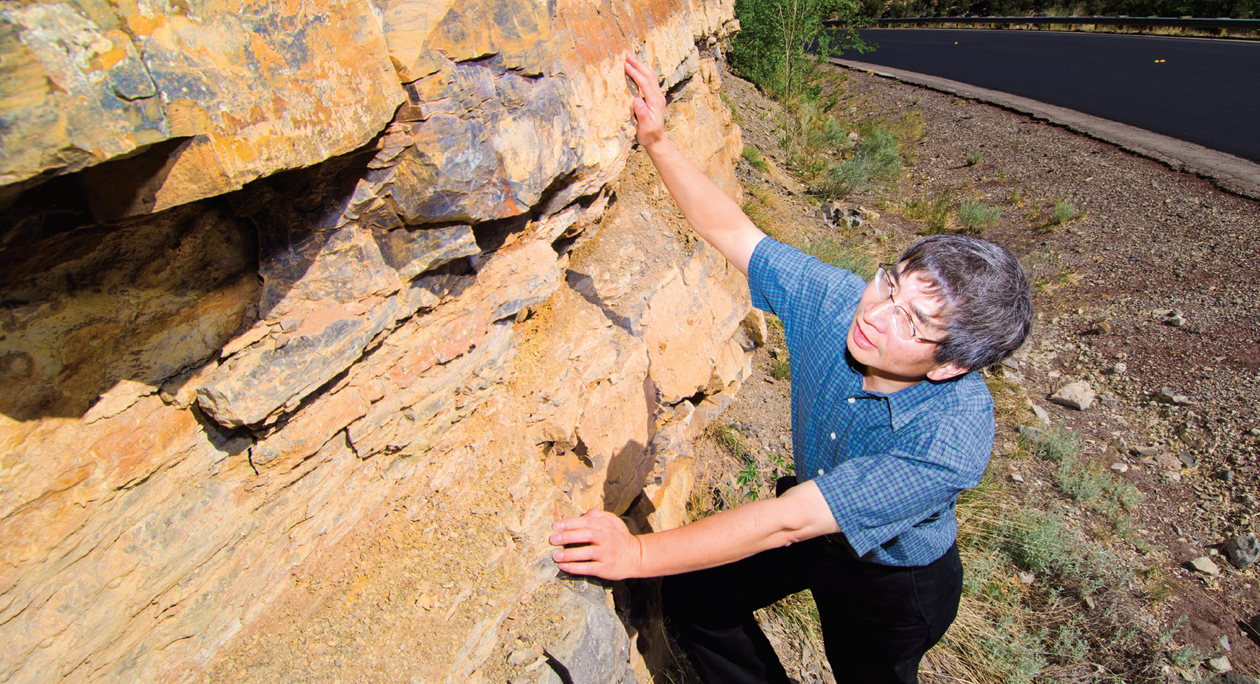
A former DARPA robot developed at Sandia is now serving an educational purpose at New Mexico Highlands University (NMHU).
About a decade ago, Sandia developed the Multi-function Utility Logistics Equipment Vehicle, or MULE, robot. The project was sponsored by DARPA — the Defense Advanced Research Projects Agency — Lockheed Martin, and Sandia to help troops haul heavy equipment across a variety of terrains, and could negotiate one-meter steps. But once the MULE had served its purpose, it was parked in a garage at Sandia’s Robotic Vehicle Range and left alone until the summers.
For the past two summers, students and Gil Gallegos, chair of the computer and mathematical sciences department at Highlands, worked with the MULE as part of DOE’s FAST, or faculty/student program, which pairs students with professors for research projects.
Gallegos and NMHU students added hardware and software to expand the MULE’s capabilities.
“Every summer, we’d dust this off, and students would get very excited to work on it for the summer,” says Jake Deuel (6532), manager of the Robotic and Security Systems group. “We realized we weren’t doing anything with it, and found a way to donate it to NMHU for two years.”
Gallegos says the goal of having the MULE at the university’s lab is to help generate thesis topics for graduate students in the computer science department and for undergraduate senior capstone projects. He adds that it will be a valuable recruiting tool to encourage students to pursue STEM careers.
“We’re very appreciative of Sandia allowing us to use this. It really does improve our program, and it’s very exciting to have the robot in the lab and to have students excited about it,” Gallegos says.
Miguel Maestas earned his bachelor’s degree in computational engineering from NMHU two years ago and is now in his second semester as a master’s student. He says the MULE will be instrumental to his thesis work, and is anxious to start working with it. He will first run diagnostics to ensure all electronic parts are intact, and has plans to integrate a 3-D image capture function. Eventually, this would help with object and possibly facial recognition to enhance the robot’s navigational capabilities.
Currently, four undergraduate and three graduate students are signed up to work with the MULE, but Gallegos expects that having the robot on campus will continue to generate interest. Other projects in the works include software development to communicate with motors that control the MULE’s six wheels and shoulders and installing microcontrollers for individual joints, shoulders, and wheels.
“I’m hopeful that this will help recruit other students into the computer sciences department. It’s very exciting to be able to work with the MULE and to know that it has been used to help develop other projects that are state-of-the-art,” Maestas says.